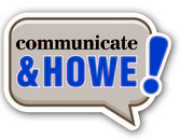How to work with a graphic designer
A talented, creative graphic designer is priceless. They can make just about anything look good-or at least as good as possible-even if you’ve given them a dog’s breakfast in terms of content. You may even be able to persuade them to do what you want even if it’s not good design.
But why would you want them to deliver poor design when knowing how to work with a graphic designer can help you develop materials able to help you achieve your goals and objectives?
Knowing how to work with a graphic designer is also critical to helping you get the most bang for your buck by making the best use of your designer’s time.
In this post, I’ll share advice on how to effectively work with a graphic designer from my years of experience doing so and others gained from my own desktop publishing.
Advice for working with a graphic designer
Determine your direction
By determining your direction and sharing it with your designer, you are more likely to see what you expect to see when you are presented with a draft. As a result, you’re not likely to need to go back to the drawing board and start over and fewer revisions will be needed to get to the end product.
- Know what you’re trying to achieve and who you’re trying to reach - Let your designer know. This information helps determine the design direction.
- Determine your specifications - If you have any preferences for size, length or use of colours, let your designer know before they start. In fact, you should get quotes for printing and know your mailing costs too and/or know your plan is for distribution.
- Have a plan - Figure out what content you are going to use and where it will go. The more ambitious the project, the more important this step becomes. I like to create rough mock-ups (usually at 100% size). Your plan can also help you to identify length of content and other creative that needs to be arranged such as photography. A good plan will be like a road map (remember those?) for your designer.
- Share your vision - If you have a vision of what you want either inside your head or inspired by other materials you’ve seen, describe it or show it to your designer.
Use your designer’s time wisely
- Finish your writing before it goes to design - Your written content should be finished, edited/revised and approved before going to your designer. Once a designer gets ahold of your content, it becomes part of the project’s design. Your designer will be making choices about character and line spacing for example. Even a small change in text, can have a domino effect on the design. So changes mean more time in design and that affects costs and delivery of the finished product. The more rewriting that occurs in design, the more redesign that occurs.
- Have other material you are providing ready for design - Have photos, illustrations, data for graphs and charts all ready to go. Or at least let your designer know when to expect them.
Free your graphic designer to Design
- Trust your designer to use their creativity and skills - You’ve hired a graphic designer because they have training and experience that you don’t have. They can create material that is polished and professional with a level of finesse and creativity that you can’t pull off. So once they know the context established earlier, let them loose to do what they do best.
Streamline the revision process
- The best time to make design revisions is after the original draft - If you are not happy with the design direction, it is best to say so at the earliest possible opportunity. After the first draft is the best time. It’s much better to make changes at that point than to constantly be making decision changes at each draft-which bogs down the design stage.
- Get agreement on design before going too far - If you have a multi-page document, get a small portioned designed so that you can see the direction and agree upon it. Better to have any changes worked out before a lot more time and effort have gone into laying out a document and then making changes. Similarly if you are doing a series of brochures or fact sheets that will have a common look but different content, get one completely finished before doing any of the rest. I recommend doing the one with the most content or other design challenges.
- Make only must make changes - We all want our material to be perfect. The truth is that it rarely is absolutely flawless. More common is that every time we see a proof, we find something else that we want to change. Resist the urge. And the further you are along the design process, the more you need to resist the urge to make a change. Ask yourself if it is a “must make” change or a “nice to make” change. In short, if you don’t make the change will you be sharing inaccurate information or look bad such as a spelling mistake-or is it something that is unlikely to be noticed or is more about personal writing style than a necessary change.
Of course you can make your life easier by working on your print material with Communicate & Howe! We’ll take care of the kind of considerations I’ve outlined here by being your project manager and creative director. We promise to keep you and your team in the loop so that the end product is one that makes you happy!
Do you have any tips for working with Graphic designers?
photo credit: liber via photopin cc






